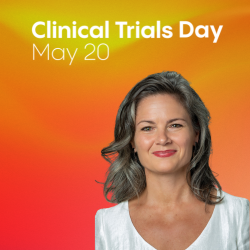Writing in the July 12 online issue of Nature Communications, researchers at University of California (UC) San Diego School of Medicine describe a new approach that uses machine learning to hunt for disease targets and then predicts whether a drug is likely to receive U.S. Food and Drug Administration (FDA) approval.
The study findings could measurably change how researchers sift through mountains of data to find meaningful information with significant benefit to patients, the pharmaceutical industry, and the nation’s healthcare systems.
“Academic labs and pharmaceutical and biotech companies have access to unlimited amounts of ‘big data’ and better tools than ever to analyze such data. However, despite these incredible advances in technology, the success rates in drug discovery are lower today than in the 1970s,” said Pradipta Ghosh, MD, senior author of the study and professor in the Departments of Medicine and Cellular and Molecular Medicine at UC San Diego School of Medicine.
In the new study, Ghosh and colleagues replaced the first and last steps in preclinical drug discovery with two novel approaches developed within the UC San Diego Institute for Network Medicine. The researchers used the disease model for inflammatory bowel disease (IBD), a priority disease area for drug discovery and a challenging condition to treat because no two patients behave similarly.
The first step, called target identification, used an artificial intelligence (AI) methodology to help model the disease using a map of successive changes in gene expression at its onset and during its progression.
The last step, called target validation, was conducted in a first-of-its-kind Phase 0 clinical trial using a living biobank of organoids created from IBD patients. The Phase 0 approach involves testing the efficacy of the drugs identified using the AI model on human disease organoid models—cultured human cells in a 3D environment that mimic diseases outside of the body. In this case, an IBD-afflicted gut-in-a-dish.
“The Phase 0 trial concept was developed because most drugs fail somewhere between Phases I and III. Before proceeding to patients in the clinic, Phase 0 tests efficacy in the human disease models, where ineffective compounds can be rejected early in the process, saving millions of dollars,” said Soumita Das, PhD, co-senior author of the study and an associate professor in the Department of Pathology at UC San Diego School of Medicine.
The drug identified by the AI model not only repaired the broken cell barriers that characterize IBD in the organoid models, but also protected them against the onslaught of pathogenic bacteria that were added to the gut model. “These findings imply that the drug could work in both acute flares as well as for maintenance therapy for preventing such flares,” Das said.
The researchers found the computational approach had a surprisingly high level of accuracy across diverse cohorts of IBD patients, and together with the Phase 0 approach, they developed a first-in-class therapy to restore and protect the leaky gut barrier in IBD.
“Our study shows how the likelihood of success in Phase III clinical trials, for any target, can be determined with mathematical precision,” said Debashis Sahoo, PhD, co-senior author of the study and an associate professor in the Departments of Pediatrics and Computer Science at UC San Diego School of Medicine and UC San Diego. “Our approach could provide the predictive horsepower that will help us understand how diseases progress, assess a drug’s potential benefits, and strategize how to use a combination of therapies when current treatment is failing.”
The authors said next steps include testing if the drug that passed the human Phase 0 trial in a dish can pass Phase III trials in clinic; and whether the same methodologies can be used with other diseases.
“Our blueprint has the potential to shatter status quo and deliver better drugs for chronic diseases that have yet to have good therapeutic solutions,” said Ghosh.
Edited by Gary Cramer



